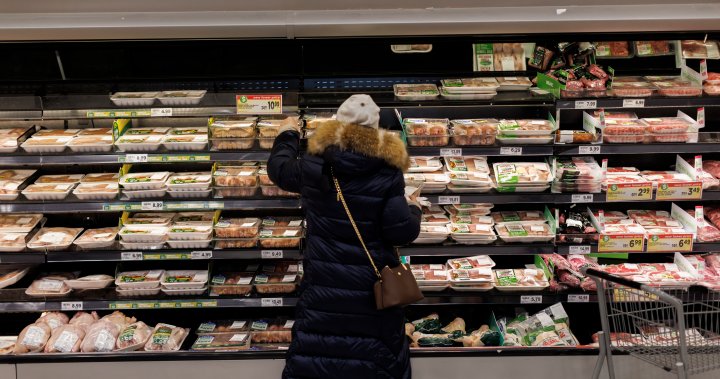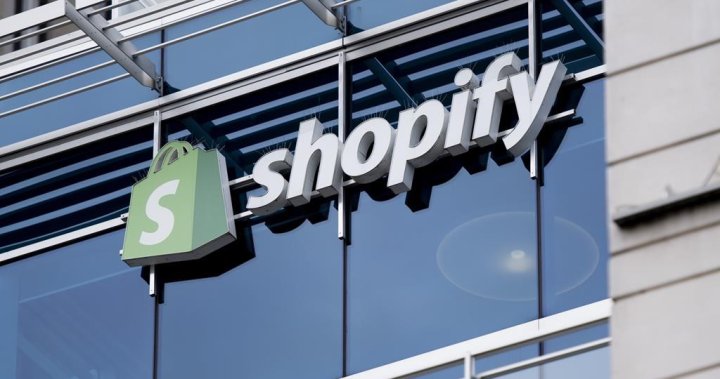When Diana Skakavac scrolls grocery store loyalty apps, she’s always looking for her “unicorn”: personalized offers for Tide laundry powder.
“My grandma is a very strict user of the Tide powder. She always has me purchase that for her,” said the Toronto woman behind the Have Coupons Will Travel account on Instagram.
“It has to be Tide powder. We’re not bringing home the Tide liquid or the pods. She’s very brand loyal.”
But no matter how often Skakavac picks up Tide powder, the grocers never seem to reward her for the behaviour.
“My friend and I used to joke about that. She got one (Tide offer) like two or three years ago and she held onto that thing for dear life because for some reason, they never come around.”
Why Skakavac never scores Tide discounts lies in the mysterious nature of grocer loyalty programs, which pump out a plethora of personalized incentives every week designed to lure in shoppers.
Retailers tell customers their offers are determined by how they shop. That’s true, but it’s a bit more complicated than simply granting rewards based on past purchases.
“It’s like a constant test-and-learn process,” said Grant Packard, an associate professor of marketing at York University in Toronto, who has advised Loblaw Cos. Ltd., Indigo Books & Music Inc. and Cineplex Inc. on their loyalty programs.
The more people shop, the more the technology powering the apps learns — and it’s not only about what you reach for at the supermarket.
They learn how price sensitive you are, how likely you are to try something new or switch to a competitor brand and even whether you have moved in with a partner or family member or are expecting a baby.
“We can throw hundreds of variables into this black box and let it tell us what they’re going to do next without a human having to look at something and try to figure it out,” Packard said.
While technology and machine learning do much of the data gathering, humans are still involved in deciding what offers shoppers get.
Packard said companies take insights the technology has gathered and order systems to prioritize offers that will often influence three things: how often people shop, how much they buy and their willingness to try new products.
Get the latest Money 123 news.
Sent to your email, every week.
“They could lure you to the store sooner than you would have gone, saying you can only have this promotion if you come by the end of Thursday … or they can influence your basket size, saying that you only get this (deal) if you buy this,” said Ceren Kolsarici, an associate professor of marketing and analytics at Queen’s University in Kingston, Ont.
These kinds of offers often help grocers ensure items are bought before they expire or allow chains to secure greater discounts from manufacturers by buying larger quantities, she said.
Sometimes those manufacturers partner with grocers to promote their products through personalized offers. Other times, grocers use the programs to entice people to try their house labels.
Instead of the Tide offers she covets, Skakavac occasionally gets promotions for laundry detergent from No Name, Loblaw’s house brand. (She figures she doesn’t get Tide offers because manufacturer Procter & Gamble focuses its promotional efforts elsewhere.)
How many offers shoppers get can vary. There is “no hard and fast number” of offers Loblaw gives individuals every week because how often and at how many of the company’s banners people shop at varies, said Ryan Markle, senior vice-president of loyalty at Loblaw, which runs the PC Optimum program.
At Metro Inc., which runs the Moi program in some provinces, Alain Tadros said, “I wouldn’t want to specify for competitive reasons on the number of offers … but it varies from six to 10 offers per week per banner.”
However, the vice-president and chief marketing officer said Moi’s goal is not to change behaviour but to retain customers.
“Rewarding you for the stuff that you buy — not that you might buy — will actually make you a more loyal customer and therefore, a more loyal customer is also worth more for us,” Tadros said.
But even offers shoppers skip have value, said Markle. They help chains identity products you might buy from a competitor (or not at all), dietary restrictions and demographic information.
If someone never purchases meat, it might tell a grocer you are a vegetarian, vegan, trying to reduce your meat intake or preferring to buy meat elsewhere.
Markle said the app may then stop showing you meat offers and start marketing you meat alternatives.
But the apps sometimes get these educated guesses wrong.
For example, they once offered denture promotions to Skakavac, who shops for her household, her in-laws and her grandparents.
“Maybe the algorithm thought she might purchase this too, so let’s give it to her and see what happens.”
It didn’t work.
Eventually, apps might get an even better read on customers, including Skakavac, who finds the grocery apps she uses are pretty adept at knowing the ins and outs of her shopping habits.
“The retail industry speaks a lot about personalization, but they’re not at the level of personalization that we could be,” said Tadros.
“In the future, it’s being able to even target specials and personalized pricing.”
Packard says he wouldn’t be surprised if some of those efforts are underway at online grocers, who could already be mimicking airlines and hotels by testing pricing that can rapidly shift with demand.
But even before personalization hits pricing, it will likely transform how companies communicate with customers.
Grocers will use when and how you shop to tailor what time of day they send you emails or app notifications and what wording they use or promotions they highlight.
A new loyalty program user might see a version of a retailer’s app or website that teaches them how to get value out of personalized offers, while a more seasoned member gets a version with less coaching, Markle said.
And if a grocer detected someone is vegan and they search for milk on the supermarket’s online platform, the chain will know to present them with non-dairy alternatives first, he added.
Using the vast trove of data in these ways might feel “Big Brotherish,” said Packard, but consumers still have the ability to beat grocers at their own game: loyalty.
Shoppers can leave programs or hop between them, when one is offering more value than another.
“It’s only a problem if customers perceive that they’re trapped or actually are trapped,” Packard said.
Companies in this story: (TSX:L, TSX:MRU, TSX:IDG, TSX:CGX)




